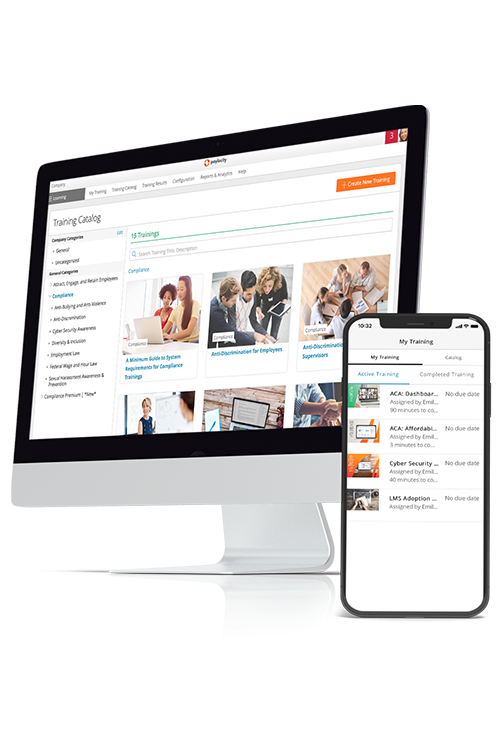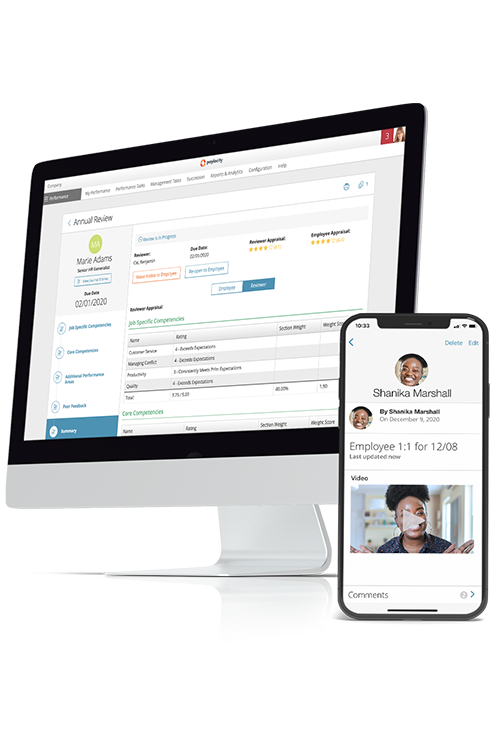
Designing Employee Training Programs That Drive Business Results
Training drives performance — when it’s done right. The best programs energize your team, align with business goals, and build lasting skills.
But here’s the catch: effective training isn’t about handing out manuals or assigning a few online modules. Real impact comes from programs that are intentional, structured, and aligned with business goals. It’s about creating learning experiences that resonate, scale, and evolve as your workforce does.
In this article, we’ll walk you through how to build a training program that delivers — from identifying skill gaps and setting learning objectives, to rolling out engaging content and measuring what matters.
Key Takeaways
- An employee training program is a structured approach to equipping workers with the essential skills they need to succeed.
- A well-designed employee training program can increase productivity and job satisfaction, making it a crucial investment rather than just a compliance checkbox.
- Effective training programs require a three-step approach, from identifying specific learning needs to implementing a system to assign, track, and adjust training based on results.
What is an Employee Training Program?
An employee training program is a structured approach to equipping employees with the knowledge, skills, and competencies necessary to perform their jobs effectively.
While programs vary, they’re all designed to close skill gaps, improve productivity, ensure compliance, and support overall business objectives. Training may include in-person workshops, e-learning courses, on-the-job training, or blended learning approaches.
What’s The Difference Between Employee Training and Employee Development?
While “training” and “development” are often used interchangeably, they serve distinct purposes within an organization:
- Employee training: Learning that focuses on immediate, job-specific skills and knowledge. It is designed to help employees perform their current roles effectively. Examples include onboarding training, software tutorials, compliance training, and customer service training.
- Employee development: Long-term learning that aims to enhance an employee’s overall professional growth and prepare them for future roles. This may include leadership training, mentorship programs, career coaching, and continuous learning initiatives.
In short, a workplace training program is about the present — ensuring employees have the skills to do their jobs well — while employee development training programs are about the future, helping employees grow within the organization.
Why is Employee Training Important?
Employee training programs are often seen as mandatory check-box items on a leader’s to-do list. But a well-designed and implemented program can support both individual employees and the whole business, enhancing an organization's health and its bottom line.
Developing training programs for staff can:
- Enhance employee performance and productivity: More than half of employees (59%) in a SurveyMonkey Audience survey said training improves their overall job performance. On the flip side, McKinsey uncovered that there’s a 22% drop in productivity when employees don’t have the skills they need. The takeaway? When employees have the knowledge and tools to perform their roles efficiently and accurately, they make fewer errors, have more confidence, and produce higher-quality work.
- Boost employee engagement and satisfaction: According to LinkedIn's 2025 Workplace Learning Report, 80% of workers say learning adds purpose to their work, and 70% say learning improves their sense of connection to a workplace. And since purpose-driven workers are more engaged, you can expect higher job satisfaction and lower turnover.
- Reduce risk: For industries with strict regulations (e.g., healthcare, finance, manufacturing), compliance training ensures employees follow legal and safety requirements, reducing the risk of violations, lawsuits, and workplace accidents.
- Improve customer satisfaction: Well-trained employees provide a better customer experience and handle challenges more effectively, which can lead to higher customer retention and brand loyalty.
- Keep the organization competitive: With rapid advancements in technology and evolving industry trends, continuous training ensures that employees stay up to date with new tools, methodologies, and best practices, keeping the company competitive in the market.
Top Types of Employee Training
Employee training varies depending on the organization’s needs, industry requirements, and workforce goals. Some of the most common types include:
- Onboarding and orientation: Onboarding training introduces new hires to company policies, culture, expectations, and job responsibilities and ensures a smooth transition into their roles. It often includes HR procedures, compliance training, and introductions to team members.
- Job-specific technical training: These company training programs focus on the skills and knowledge required for an employee’s specific role. They often include software training, machinery operation, customer service skills, etc.
- Compliance training: Covers legal and regulatory requirements, such as workplace safety, anti-harassment policies, data security, and industry regulations.
- Soft skills training: These trainings help employees develop interpersonal and communication skills, such as teamwork, leadership, emotional intelligence, and conflict resolution. It often includes diversity, equity, and inclusion (DEI) training, which educates employees on fostering an inclusive workplace, recognizing unconscious bias, and promoting cultural competency.
- Management training: Prepares employees for leadership roles by teaching management principles, decision-making, and team-building skills. It often includes coaching and mentorship.
- Product and service training: Ensures employees thoroughly understand the company’s products or services. This is particularly important for sales, customer service, and marketing teams.
How to Develop a Staff Training Program in 3 Steps
1. Identify Training Needs and Set Objectives
Before developing a training program, determine your workforce's skills or knowledge gaps. This ensures training is relevant and impactful.
Identify Training Needs
To conduct a training needs assessment, be sure to gather:
- Employee feedback: Use surveys, interviews, or focus groups to understand employees’ challenges and learning needs.
- Performance data: Analyze KPIs, performance reviews, and error reports to identify skill gaps.
- Compliance and industry requirements: Ensure training aligns with legal, safety, or regulatory obligations.
- Manager insights: Get input from supervisors on skill gaps they’ve observed in their teams.
- Customer and client feedback: If applicable, use complaints, support tickets, or satisfaction surveys to identify service-related training needs.
Set Clear, Actionable Training Objectives
Once you've identified the training needs, clearly define what employees should be able to do after completing the training.
Effective training objectives should be:
- Specific: Focused on measurable skills or knowledge.
- Time-bound: Tied to a deadline or timeline for completion.
- Achievable: Realistic based on time, resources, and employee workload.
- Relevant: Aligned with business goals and job roles.
Some example training objectives include:
- Cybersecurity training: "Within six weeks, employees will demonstrate 90% accuracy in identifying phishing emails through simulation tests."
- Customer service training: "Within four weeks, customer service agents will achieve an 85% success rate in handling difficult customer interactions by correctly implementing all steps of the five-step de-escalation process, as measured through call monitoring and customer satisfaction scores."
- Leadership training: "Within three months, new managers will complete the leadership development program with a minimum score of 85% on assessments and achieve an average team motivation score of four out of five on employee feedback surveys."
2. Consider Your Employee Training Materials
After identifying your skills and goals, you’ll now need to gather the required training material. Here’s a few common sources companies use:
- Third-party training providers: Platforms like LinkedIn Learning and Udemy for Business offer extensive corporate training programs across various skill areas.
- Internal subject matter experts (SMEs): Leverage in-house expertise through knowledge-transfer initiatives and mentorship programs. SMEs can also help develop standard operating procedures (SOPs) and playbooks to enrich your training curriculum.
- Industry associations & government resources: Many professional organizations and regulatory bodies, such as SHRM and OSHA, provide valuable training materials tailored to industry-specific requirements.
- Customized training from consulting firms: Partner with consulting firms to develop bespoke training programs tailored to your needs. These programs often focus on leadership development, change management, digital transformation, and strategic decision-making.
- Product Training from Software Providers: Consider vendor-provided courses and certifications when training employees on specific tools. Many major solution providers, like Microsoft and Google, offer structured learning paths for their products and related skill sets.
- Conferences, Workshops, & Live Training Sessions: Industry events such as HR Tech Conference, SXSW, and Dreamforce provide valuable learning opportunities through expert-led sessions, hands-on workshops, and networking
3. Assign, Assess, and Adjust
Once the training materials are ready, assign them strategically by:
- Creating a schedule: Set training to recur at a certain frequency.
- Assigning trainings: Bulk assign training based on departments or teams or assign individual employees.
- Setting reminders and rules: Reinforce compliance with timely employee reminders and the option to prevent fast-forwarding.
- Monitoring completions: Use an LMS platform that allows you to keep a good record of who completed the training and when.
- Gathering feedback: Training programs should evolve based on employee experiences, business needs, and industry changes. Use post-training surveys and one-on-one discussions to assess the success of your programs.

Elevate Your Employee Training with Paylocity
When training is intentional and well-executed, it becomes a powerful engine for growth, efficiency, and everyday learning. But to truly build a culture of continuous development, you need more than good intentions — you need the right tools.
Paylocity’s all-in-one LMS turns employee development into a strategic advantage by helping your organization to:
- Personalize learning paths: Blend custom content with our extensive library of professional courses covering everything from compliance to DEI. Interactive quizzes and supervisor touchpoints ensure real skill development, not just box-checking.
- Prevent compliance gaps: Our smart automation handles the heavy lifting of compliance training. Set it once, and we'll track progress, send reminders, and flag gaps before they become issues.
- Promote knowledge sharing: Turn your internal experts into teachers. Our intuitive platform makes it easy for team leaders to capture and share their knowledge, creating a culture of continuous learning that grows with your company.
With Paylocity, training can become a tool to empower your workforce, ensure compliance, and drive business success.
Ready to transform your employee training experience? Book a demo and discover how Paylocity can help today.



